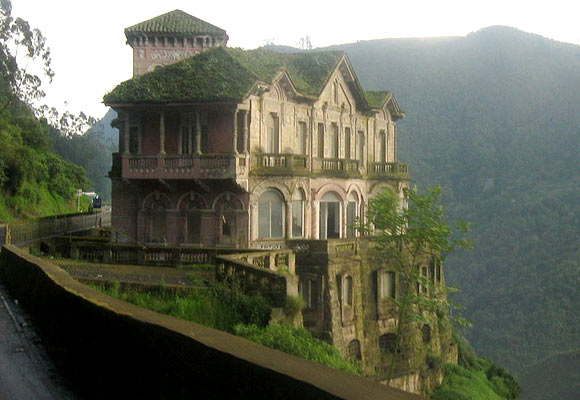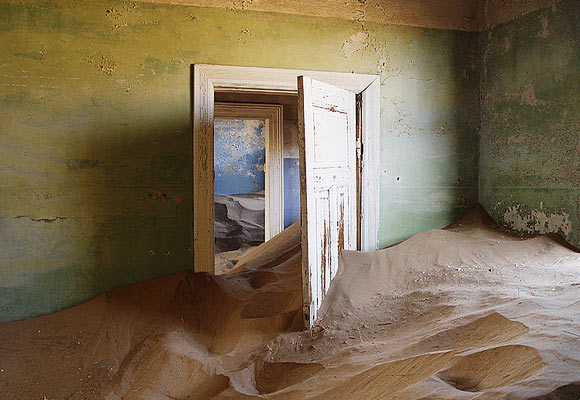
Few have heard of them, fewer still may have visited them. We bring you the most breathtakingly beautiful places that have been abandoned.
A list of abandoned places that recently went viral includes haunting locations from the nuclear town of Pripyat in Ukraine to Sarajevo's Olympic Bobsleigh and Luge Track among others. Here's a select few places we were most intrigued by.
Kolmanskop
Once a rich mining village of Namibia, Kolmanskop lies abandoned in the Namib Desert today. The story of Kolmanskop dates back to 1908 when a worker found a diamond while in the area and showed it to his German supervisor.
It didn't take long for German miners to settle down in the area and their government to declare a large part of it as Sperrgebiet or 'Prohibited Area'.
Inspired by the architectural style of a German town, the locals constructed this village that once housed a hospital, theatre, ice factory, ballroom, school, casino, power station and a sports hall.
Kolmanskop also had the distinction of having the first x-ray-station in the southern hemisphere as well as the first tram in all of Africa.
Slowly but surely, the diamond mines began to go dry and the town fell into a decline. It was finally abandoned in 1954.
Being part of a desert, the village now looks something like this and is a paradise for photographers and filmmakers.
To visit Kolmanskop however you will need a permit since it still falls in within the Sperrgebiet of the Namib Desert.
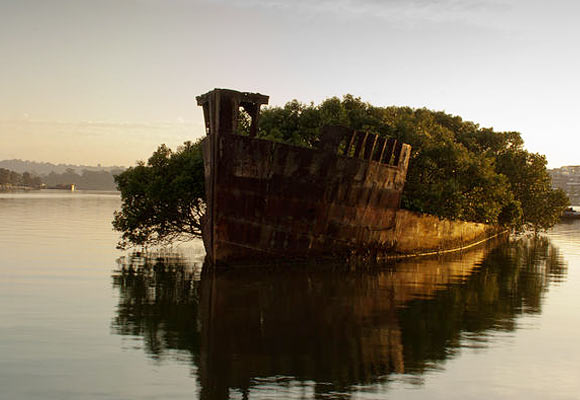
Lying to the west of Sydney in Australia is the Homebush Bay best known for its abandoned vessels.
The most popular of these is the SS Ayrfield that was used during World War II to transport supplies to American troops that were stationed in the Pacific region.
After the War was over the steam collier was sold to Bitumen and Oil Refineries Australia Pvt Ltd in 1950 and a year later to the Miller Steamship Company Ltd.
The presence of ship hulls in the Homebush Bay can be traced back to the ship-breaking operations in the bay during the mid-20th century.
Besides Ayrfield, the bay also has remains of SS Mortlake Bank, SS Heroic and HMAS Karangi as well as a fair number of smaller abandoned vessels.

Said to be China's answer to Disney World, the incomplete Wonderland Amusement Park looks no more than a faux haunted castle.
The Wonderland Amusement Park is located about 32 km outside of Beijing and was to have been Asia's largest theme park till the deal went foul as the government, the local farmers and the developer, the Thailand-based Reignwood Group couldn't agree upon the value of the land.
Even though there had been an attempt to get the project back on its feet in 2008, the year Beijing hosted the Summer Olympics, it failed and the Wonderland Amusement Park stands abandoned to this day and is being reclaimed by local farmers to produce corn.
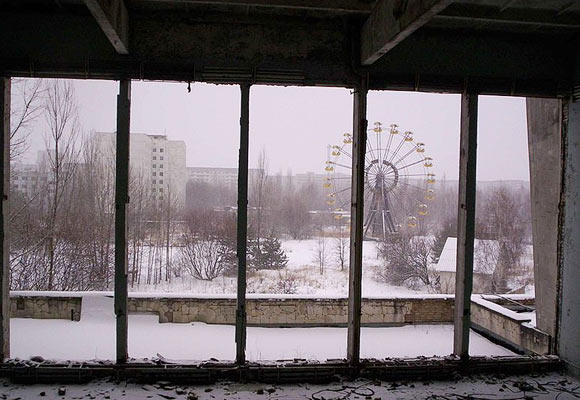
The city is directly administered from Kiev and is supervised by Ukraine's Ministry of Emergencies that is responsible for activities for the Chernobyl Exclusion Zone.
Before the disaster, Pripyat had a population of about 49,000 people and was a fully functional city with a railway station and the works. It housed 10 gyms, 2 stadia, 10 shooting galleries, 3 indoor swimming-pools besides a park and 35 playgrounds.
Today, Pripyat is a ghost town, though one that is visited by tourists since the radiation levels aren't remotely close to the fatal 1986 levels.
Even as guards and police border the city itself as well as the Zone of Alienation it isn't very hard to get documents to enter the city. In fact there are companies that organise guided tours to the city.
The most prominent landmark that has been photographed several times is that of the abandoned ferries wheel that is located in what used to be the Pripyat Amusement Park.

Located between the Bronx and Riker's Island the North Brother Island remained unoccupied till 1885 when Riverside Hospital moved here from what used to be called Blackwell's Island.
Riverside Hospital that started in the 1850s as a facility to treat and isolate victims of smallpox eventually expanded its operations to include other quarantinable diseases.
Post World War II, the island housed young war veterans but was abandoned soon after the housing shortage was over.
In the '50s the island housed a centre to treat adolescent drug addicts that claimed to be the first of its kind to offer not just treatment but also rehabilitation and education to young addicts.
By some accounts it is believed that the addicts would be kept here against their will and by the early 1960s, the facility was closed again and the island abandoned all over.
A forest covers the ruined buildings of the hospital even as the island is now a bird sanctuary and off-limits to the public.

Designed by and named after Guy Maunsell, these fortified towers were built during the World War II in the estuaries of rivers Thames and Mersey.
The aim of these forts was to deter as well as report German air raids as well as their attempts to lay mines by aircraft.
Its design included a barge that stood on two towers over which was a gun platform. Laid down and assembled in a dry dock, they were towed out and sunk into their positions in 1942 after being fitted.
By the late 1950s, these forts were decommissioned. One of them became the Principality of Sealand, unrecognised but said to be the smallest nation in the world which is all of 5,900 sq ft large.
It has been occupied by family and associates of the late Paddy Roy Bates who took it away from a group of pirate radio broadcasters and established it as a nation by writing its constitution.
Needless to say it isn't recognised officially recognised by any established sovereign state. Even so Bates claims that the UK has recognised it because an English court ruled that it didn't have jurisdiction over it because of territorial water limitations.
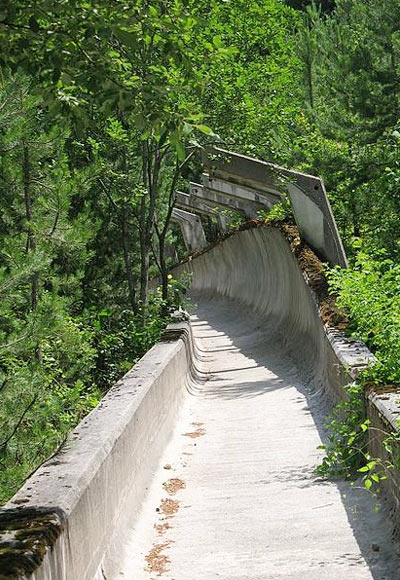
Overlooking the City of Sarajevo on the Trebevic Mountain is this abandoned Bobsleigh and Luge Track.
Constructed for the 1984 Winter Olympics that Sarajevo hosted, the track took a little over a year to complete.
The track continued to be in use even after the Winter Olympics for World Cup competitions. Then came the Yugoslav wars in 1991 and the Siege of Sarajevo in 1992 during which the Serbian guerrillas used the track as an artillery position.
In spite of the war wounds being prominently visible, most of the track remains intact though abandoned and a canvas for graffiti and vandals.
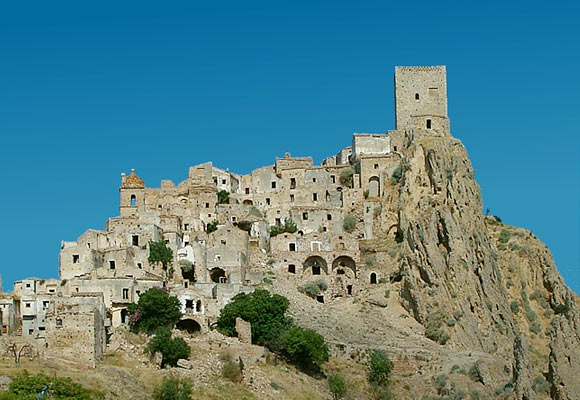
The history of Craco goes back to 540 AD when the Greeks had inhabited it. Craco's name itself can be traced back to 1060, a time when it belonged to Archbishop Arnaldo, Bishop of Tricarico.
Since then, even though the town has changed several hands, churches have remained central to its history and of which there are many here.
The church of the Observant Friars Minor dedicated is dedicated to St. Peter and dates back to the 17th century.
There is also the church of Santa Maria della Stella where the statue of the Virgin Mother Mary and Child is said to have been discovered by a shepherd.
Yet another one is located in the section of the hilltop that continues to remain inhabited that and one that has religious relics of the mummified body of the martyred patron saint of the town, Vincenzo.
Craco has for the longest time been a seismically sensitive zone and sees several earthquakes. Portions of it were damaged by several landslides between 1959 and 1972 making the place uninhabitable.
In 1963, its 1800 residents were moved to Craco Peschiera leaving the town abandoned. Today however a few hundred residents have made it their home and continue to stay here.

Situated quite literally in the heart of Sri Lanka, Anuradhapura has had a turbulent and violent history.
At the peak of its glory, Anuradhapura was inarguably one of the greatest cities in the world and a cultural capital that boasted of monasteries housing over 10,000 monks at a time and dagobas second in scale only to the Pyramids of Giza.
Anuradhapura was also the centre of Sri Lanka's hydraulic feats with huge reservoirs designed to store and supply water to the dry arid lands that surrounded the city and enjoyed a reputation in and did fair amount of trade with countries as far as Greece and Rome.
The city has seen innumerable highs and as many lows.
Having risen to dizzying heights around c300-260BC under Devanampiya's rule and later again during the reign of Dutugemuni (161-137 BC), Anuradhapura never recovered its former glory and suffered at the hands South Indian rulers who attacked it from time to time.
Finally, in 993 AD the Cholas from Tamil Nadu destroyed Anuradhapura completely and set up their capital further south at Polonnaruwa.
While a few half-hearted efforts were made to restore it, the city was largely consumed by the forest, leaving just a few communities of monks who guarded the holy Bodhi tree that grew from the branch of the same tree under which Buddha is said to have gained enlightenment.
It was left to the British to rediscover this city and make Anuradhapura a provincial capital in 1833. Today, the tree stands in its full glory at Sri Maha Bodhi and is surrounded by a temple (and a strong presence of the Sri Lankan Army).
How long you take to explore Anuradhapura depends entirely on how interested you were in the pictures of Mohenjo-Daro in your school text book. Nonetheless just walking around the ruins can be overwhelming, to know that you stand at the very spot where once a country was born and a culture flourished.
